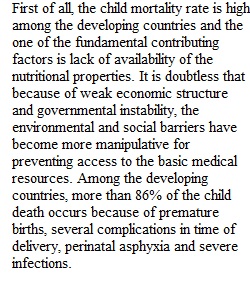


Q Many achievements has been made in the battle of child health improvement, while other seemingly good measures have not played a role. After completing the readings and watching the video, what do you think would be contributive factors that cause high child mortality rate? Why is a particular program successful or unsuccessful? What is the role of social determinants of child health in the case(s) you have chosen? How would you improve the effectiveness in response to the limitations mentioned in the case(s) if you were in charge of policy making or evaluation? Please refer to at lease one case (four cases in Millions Saved, and the Angola case in the video). You can also compare and contrast different policies, measure and evaluation system, social conditions or other aspects between cases. You are also welcome to bring other sources during the discussion!
View Related Questions